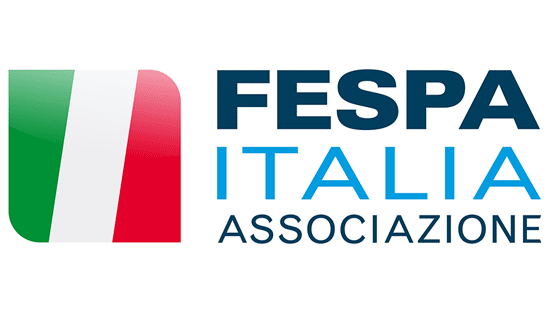Paper to vapour: the future of printing in South Africa

Abdool Majid Mahomed, the new CEO of Printing SA, discusses how technology is reshaping markets in South Africa.
Printing SA only joined FESPA in 2014: what advantages has membership of the federation brought?
Joining FESPA has brought international shows to our shores and given African delegates a preview of an array of new technologies – making a positive impact on the industry.
The FESPA funding we have received has made our training projects leap forward, and the new blended approach of developing both printed guides and e-learning is a first for this industry. The learning management system will allow for new courses to be offered internationally with ease, and improve throughput, allowing for online formative and summative assessments.
Tell us a little bit about your background and how your experience will feed into your role as CEO…
As the CEO of Printing SA, I see it as a culmination of my work career that spans 30 years. Having been a teacher in my “first life”, I moved into a communications and marketing role, developing some expertise in the prepress and design fields. I then served as an Executive Director for a huge print and distribution network for the University of South Africa, managing two large print sites and three distribution warehouses and the logistics of courseware production for more than 400,000 students globally. I also served as the Head of Professional Body for the Chartered Institute of Procurement and Supply, managing the Southern Africa region. All these roles are now combined into what I am expected to do as the CEO of Printing SA – developing a compelling business model of value-added offerings, and growing and servicing a membership base not only in South Africa but across the continent as well.
The industry is not dying, but merely transitioning or transforming – and continuously evolving
How do you want to take Printing SA forward? What are your new focuses?
Our members have not traditionally attached much value to their membership of Printing SA. We have now completed a serious review through a member survey, listening to their needs, and will shortly revamp our service offerings to be more customer-centric. We will launch our new suite of services in early 2020, heralding a new chapter in our active engagement and relationship with member companies.
What is the state of play in the print industry in South Africa?
While the industry is shrinking it is not dying, but merely transitioning or transforming – and continuously evolving. Through the use of appropriate technologies that are now available, and putting innovation at its heart, the industry now offers new types of communication channels on various substrates to a new breed of customer who wants things right here and now, packaged individually.
We are moving away from traditional printing machines to more digital print on demand. While paper is still at the heart of it, there is a move from “paper to vapour” – that is in the cloud, online and on various textures including glass, plastic, wood, rubber, aluminium, steel, textiles, footwear and wraparounds for vehicles and trucks, billboards and so on. Printing will be more ubiquitous, happening everywhere, in our faces.
Most companies are reporting a decline in the amount of printed work, with print runs much smaller. This is attributed to the current state of the economy in South Africa. Those customers who place large orders are doing so on the condition that the printer holds the stock and the customer only pays at each stock withdrawal, thereby placing the burden of cost onto the printer. The packaging sector however seems to be inclining upwards.
Some original equipment manufacturers are laying down digital machines at traditional litho printers to entice them into embracing digital by charging click charges only. This kind of offer is very palatable initially, and once the shift is made, they then introduce lease and other higher click costs, creating a serious dilemma for them.
What particular challenges do you face in South Africa?
A struggling economy with a weak South African rand, and purchasing power decreasing.
There are downsizing and retrenchments within this industry (about 21 of 400 print companies announced retrenchments in the first half of 2019). The unemployment rate is also rather high at 29%.
There can be a negative perception that print damages the environment. The phenomenal work that Two Sides (a global player that encourages print) does can be increased to counter misconceptions about print.
The major technological leap seems to be towards digital print on variable substrates
Many member companies have traditionally been white family-owned businesses. Transforming the racial composition of these is a challenge. New emerging black entrepreneurs – while they do get some government support as start-ups – do not have the vast capital resource base to invest in heavy machinery, which is all imported.
What problems do FESPA members face in SA?
Printing SA has recently started marketing FESPA and the amazing resources and information on its portal to its members. It can only grow going forward with more aggressive marketing from our side.
What is the next big technological leap forward in your opinion?
The major technological leap seems to be towards digital print on variable substrates.
Consumers want package deals and prefer a one-stop shop, with extra services embedded in the offering. This demands business diversification, shorter runs and more customisation, which will result in shifts in business models. Convergence and consolidation is the new name of the game, adapting the current infrastructure, systems and technologies to service multiple markets.
While artificial intelligence can help with the mundane and repetitive elements in workflows, there is still a need for human capital to be empathetic and ethical, and to be open and take a “blue ocean” approach that is amenable to change, inclusive and embracing.
And, in turn, what are the next big obstacles that printers are likely to face?
Access to capital and a cautious market. There is also the demand for more print and also general training – such as specific marketing skills for persons who are novices in the print industry – which member companies have been clamouring for. But our ability to produce these and get them approved through our local curriculum approval bodies can be a long and tardy process. Many lost opportunities have resulted.
How difficult is recruitment in SA? Does the education system help or hinder an influx of young workers?
In general, recruitment is strained as there seems to be fewer jobs than there are vacancies. The lowering of exit level standards in the matriculation system in South Africa makes learners who lack basic literacy skills enter the job market, hindering their ability to find meaningful work.
There is also a need for a specialised vocational training academy catering for the various skills in short supply within the printing and packaging industries.
Smaller companies that spend resources in training skilled artisans find that these trained persons get scooped up by larger companies, as they are able to offer more career advancement opportunities than smaller companies.
There is also a crying need for career advice and awareness campaigns for school leavers to enter this industry. Traditionally it was regarded as an “ink/grease on your hands” type of job, but now with newer technologies, the appeal of these jobs can be enhanced. The Generation Z and Generation Alpha workforce can be enticed to work in this creative and visual communications industry – what printing has evolved into.
What about Africa more broadly? How can the industry grow further? What areas of potential growth are there on the continent?
There is huge potential in Africa to grow all facets of the printing, signage and packaging industries, but it requires a physical presence in these countries in partnership with governments and local trade associations or chambers. Trade agreements and trade tariffs play an important role in being able to penetrate these markets. The new African Continental Free Trade Area aims to deregulate the space of free trade in services and products among the signatory countries. This potentially can have many positive benefits, but also some unintended negative consequences.
Where do you take printing inspiration from?
Richard Branson, Steve Jobs and Nelson Mandela stand out for me for different reasons and their unique achievements.
All international events and expos also give a taste of things to come, and the latest trends and technologies within the Fourth Industrial Revolution (4IR) is ushering in a new and exciting world order.
Become a FESPA member to continue reading
To read more and access exclusive content on the Club FESPA portal, please contact your Local Association. If you are not a current member, please enquire here. If there is no FESPA Association in your country, you can join FESPA Direct. Once you become a FESPA member, you can gain access to the Club FESPA Portal.
Topics
Recent news

How AI can benefit your data collection
Printers are collecting data about everything from costs to customers and inventory. But how can AI help you to make the most of that?

No minimum order: the growth of DTF decoration
Andy Rogers at Stahls’ UK and Europe, garment decoration firm based in Braintree, UK and Dillingen, Germany, on the cost and speed benefits of direct to film (DTF) printing.

The design democracy: AI, creativity and interior décor
We spoke to Matt Fletcher of John Mark Ltd and Cheryl O’Meara from the Print Pattern Archive about combining age-old techniques with artificial intelligence (AI) to create exciting new motifs for luxury wall coverings.
